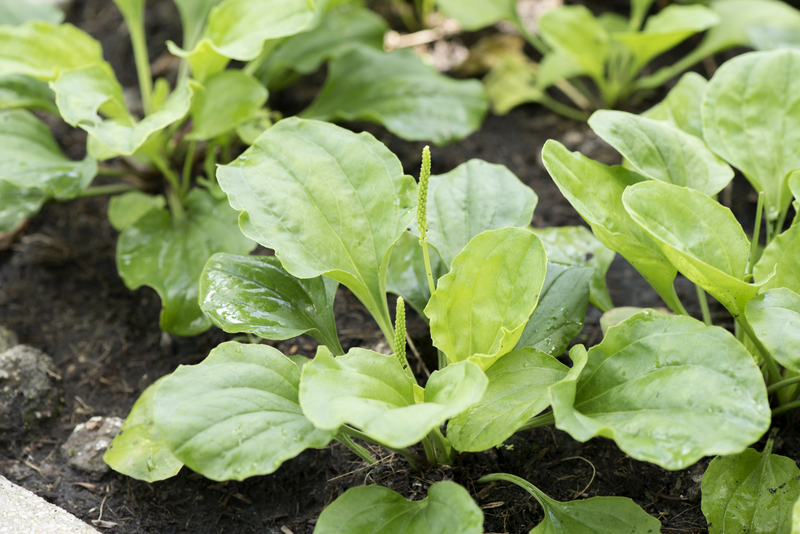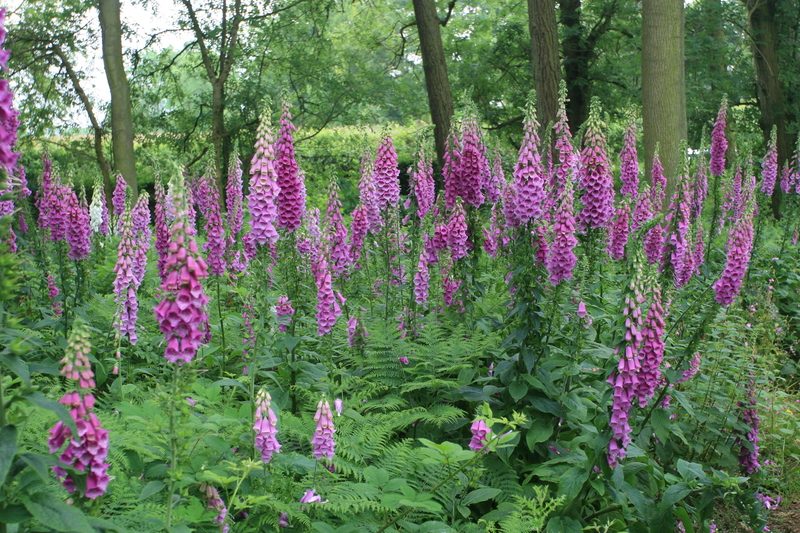Creating a Garden Paradise for Young Minds
Posted on 10/09/2025
Creating a Garden Paradise for Young Minds: Cultivating Curiosity and Growth
Gardens are more than just beautiful spaces; they are living classrooms and havens for creativity, exploration, and lifelong learning. In a world increasingly dominated by screens and schedules, creating a garden paradise for young minds can provide a sanctuary filled with lessons from nature, hands-on engagement, and boundless imagination. This guide will explore how to design, build, and nurture a garden that inspires children--fostering curiosity, responsibility, and joy.

Why a Garden Paradise Is Important for Kids
Modern research continues to underscore the benefits of nature for children's cognitive, emotional, and physical development. Here's why developing a garden retreat for young learners is more crucial than ever:
- Enhances Learning: Gardens provide sensory-rich environments where children can observe, investigate, and experiment--turning abstract concepts into meaningful real-world experiences.
- Promotes Wellbeing: Green spaces reduce stress, improve mood, and foster a sense of calm, helping children thrive emotionally.
- Encourages Responsibility: Tending a garden teaches patience, accountability, and respect for living things.
- Boosts Creativity: The garden is a blank canvas for imagination, from creating fairy houses to inventing stories about bugs and plants.
- Supports Physical Activity: Digging, planting, watering, and harvesting are all great ways to get kids moving and build fine motor skills.
How to Design a Kid-Friendly Garden Paradise
When building a child-centric garden space, it's essential to consider both safety and engagement. Here are key principles to guide your design:
- Accessibility: Create paths and beds that are easily reachable for smaller hands and feet. Raised beds, wide walkways, and defined borders help little ones navigate the space confidently.
- Variety: Incorporate a mix of colors, textures, and heights to stimulate the senses. Fragrant herbs, bright flowers, towering sunflowers, and leafy greens all add diversity and intrigue.
- Interactive Elements: Add features like stepping stones, sensory paths, water elements, or garden art to invite exploration and play.
- Safe Spaces: Designate shady spots for rest, and avoid thorny or toxic plants. Soft mulch or grass underfoot cushions tumbles.
- Flexibility: Allow space for projects that change with the seasons or with your child's evolving interests.
Choosing the Best Plants for a Children's Garden Paradise
The best plants for young learners are easy to grow, quick to yield, and fun to interact with:
- Sunflowers: Offer dramatic growth and cheerful blooms that are sure to captivate curious eyes.
- Pumpkins and Gourds: These provide a magical transformation from seed to harvest, perfect for storybook adventures.
- Edible Herbs: Basil, mint, and chives stimulate taste and smell, and can be used in simple recipes.
- Strawberries: Easy to grow in the ground or containers, and reward patience with sweet snacks.
- Nasturtiums and Marigolds: Attractive, pollinator-friendly, and edible for adventurous taste testers.
- Snapdragons and Lamb's Ear: Fun to touch and handle, these add a sensory twist to the garden experience.
Essential Elements for a Magical Outdoor Classroom
Beyond plants, several features can transform your garden into a vibrant paradise for young minds:
- Exploration Stations: Sand pits, mud kitchens, weather stations, and bug hotels create opportunities for hands-on learning and investigation.
- Outdoor Seating: Benches, logs, or picnic blankets allow for quiet reflection or group activities under the sky.
- Art Zones: Encourage creativity by providing a space for nature-inspired painting, chalking, or crafting.
- Shade and Shelter: Install a pergola, plant a living teepee, or use umbrellas to protect from harsh sun.
- Pathways and Hidden Corners: Winding paths or secret nooks invite adventure and imaginative play.
Engaging Young Minds: Activities for the Garden
To maximize the benefits of your garden sanctuary for children, organize activities that spark curiosity and long-lasting engagement:
1. Planting and Harvesting Days
Let children choose what they want to grow, guide them through planting, and celebrate each milestone. Whether it's the burst of a green shoot or the picking of the first tomato, participation ensures connection and pride.
2. Nature Journals and Observations
Encourage kids to track growth, identify wildlife, and document weather. Drawing, writing, and photographing their discoveries inspires scientific thinking and storytelling.
3. Themed Garden Projects
Create special sections, such as a butterfly garden, fairy garden, or sensory path, and let children help plan and tend these magical spaces.
4. Seasonal Celebrations
Mark the changing seasons with garden crafts, planting festivals, or harvest feasts. These rituals deepen children's connection to the natural cycles.
5. Science Experiments
- Investigate pollination with paintbrushes and flowers.
- Test soil and record observations on plant growth rates.
- Create miniature composts to observe decomposition and life cycles.
6. Garden-Themed Games
Organize scavenger hunts, plant bingo, or insect counting challenges. Play-based learning is always effective in cultivating young minds outdoors.
Teaching Responsibility and Sustainability Through Gardening
Creating a garden paradise for young learners is more than play--it's a foundation for stewardship and respect for the environment. Children who care for their own patch of earth learn:
- The importance of routine: Plants need regular care, teaching consistency and time management.
- Sustainable practices: Composting, water conservation, and organic gardening methods introduce eco-friendly habits.
- Community values: Sharing the garden's bounty, working together to complete tasks, and respecting wildlife nurture empathy and collaboration.
By letting kids take ownership--watering, weeding, or picking up litter--you empower them as guardians of their own paradise. This pride translates into broader environmental awareness that can last a lifetime.
Overcoming Challenges in Garden Creation
No outdoor transformation is without its hurdles, but forethought and creative solutions can turn obstacles into opportunities for learning:
- Limited Space: Grow vertically using trellises, hanging baskets, or container gardens. Even a windowsill can host a mini paradise.
- Safety Concerns: Fence off ponds, choose non-toxic species, and keep tools supervised.
- Short Attention Spans: Alternate tasks and add plenty of play breaks. Quick-growing plants and immediate successes help sustain interest.
- Poor Soil/Light: Use raised beds with quality soil and select plants that thrive in your conditions.
Involving the Whole Family or Community
A garden paradise for young minds shines brightest as a shared effort. Involve parents, grandparents, teachers, or neighbors to enrich the experience:
- Host regular garden workdays or picnics.
- Invite local naturalists or artists for workshops.
- Encourage intergenerational sharing of gardening traditions and stories.
These collaborations build a sense of belonging and ensure the garden remains an evolving legacy for all ages.

Long-Term Benefits: Nurturing Future Stewards
The magic of a garden sanctuary for children lies not just in its blooms but in the seeds it plants within young hearts and minds. Through time spent nurturing their patch of green, children:
- Develop resilience by learning that mistakes and setbacks are part of the growth process.
- Build confidence as their efforts yield tangible results and recognition.
- Gain practical skills in problem-solving, planning, and teamwork.
- Establish a lifelong connection to nature that encourages them to become thoughtful environmentalists.
Tips for Maintaining a Child-Friendly Garden
- Rotate activities seasonally to maintain interest and variety.
- Offer choices and voice in garden plans, so each child feels a sense of ownership.
- Keep it fun--avoid too many restrictions. Safe freedom enables exploration.
- Celebrate achievements together, from the first sprouts to the final harvest.
Conclusion: Planting Possibilities for a Brighter Future
In today's fast-paced world, creating a garden paradise for young minds is both an act of hope and a practical pathway to nurturing wise, happy, environmentally aware children. No matter the size of your space or the age of your gardener, a thoughtfully designed and lovingly tended outdoor haven can open doors to inquiry, connection, and growth that last a lifetime.
Start small or dream big--but let your garden be a paradise for learning, play, and endless wonder. Let the seeds you sow today blossom into a healthier, kinder, and more curious tomorrow.
Happy gardening!



